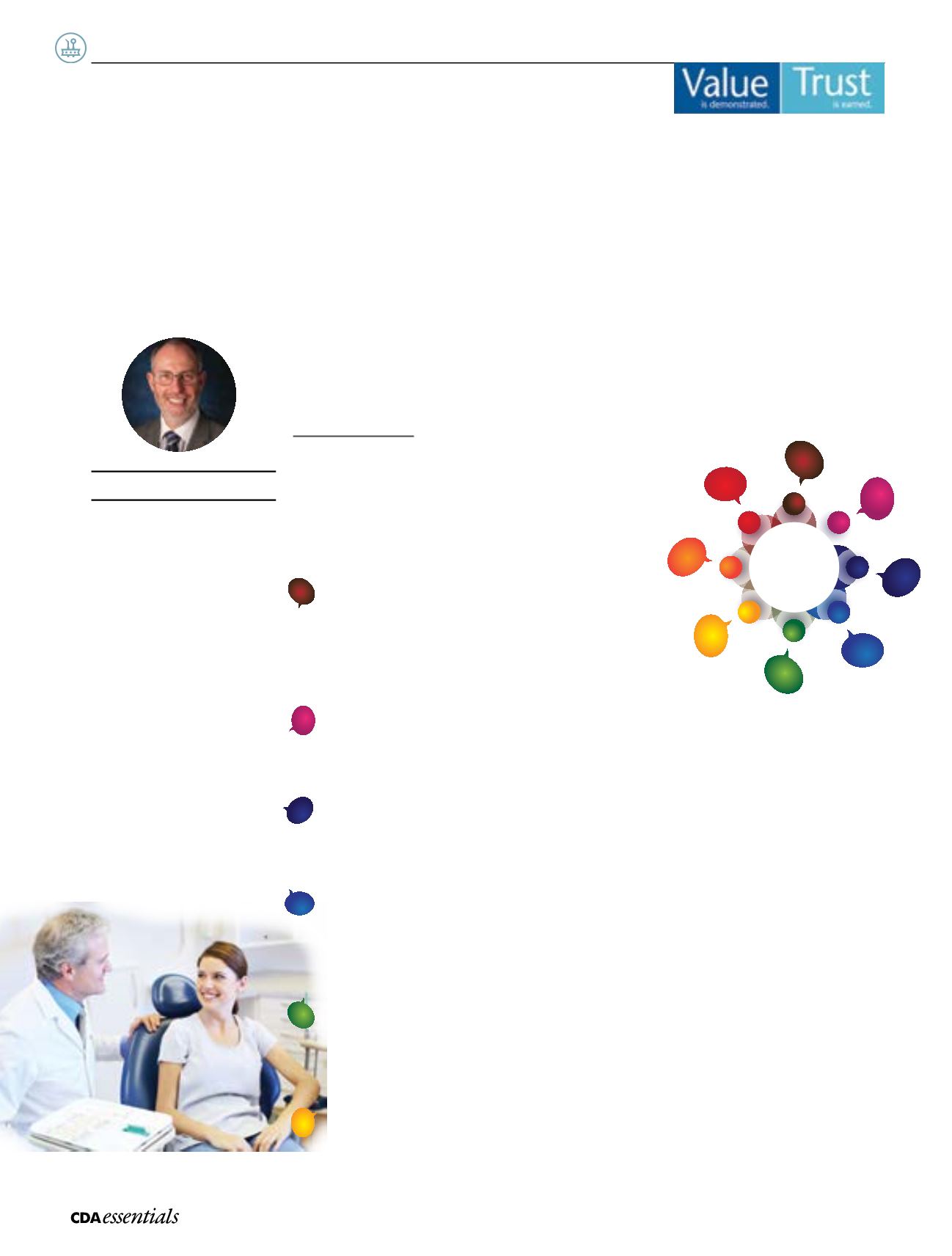

14
|
Volume 1 Issue 7
CDA
at
W
ork
Recent research conducted by CDA revealed that 92% of dentists
identify effective communication as the most important factor in
building positive relationships with patients.
Clear chairside communication is vitally important and
isn’t difficult to perfect. Refining and updating this skill is
something every dentist should take seriously. A few simple
adjustments to patient communication can go a long way
to enhance trust and reinforce value in the care you
provide.
•
Help set the tone with new patients.
It’s a good
idea for the dentist to be available at the start of an
appointment to welcome new patients–even if just
briefly. This welcoming gesture conveys that you are
the leader in the practice, and tells your patient that you
value them as a new patient.
•
Listen and focus on your patient.
Listen attentively to your patient’s concerns
and oral health goals. Pay attention to body language and clarify if you sense any
unspoken concerns. Make sure you have the information you need to make informed
recommendations.
•
Ask questions.
Patients are more likely to offer valuable information when asked the
right questions. To help earn their trust, ask patients how they feel, if they want more
details, or if they understand the options you have presented. A little probing can
provide insights and help avoid misunderstandings.
•
Use lay language.
Few patients understand dental anatomy terms or the clinical names
of dental procedures. At the same time, some patients may be uncomfortable admitting
that they don’t understand what you’re saying. Clear chairside communication will help
patients understand your diagnosis and the recommended treatment options while
encouraging open, trusting dialogue.
•
Explain the ‘what’ and ‘why.’
The dental examination is the basis for your treatment
recommendations. Explaining what you’re doing during the exam, and why, helps
patients understand and value your recommendations. Good communication during
their appointment reinforces that you are focused on their care and helps patients
understand why recommended procedures are necessary.
•
Get comfortable discussing fees.
According to our research, 49% of dentists think it’s
not important to personally explain costs to their patients—in fact, it was rated as one
Earn Trust, Demonstrate Value
SIMPLE STEPS TO IMPROVE
PATIENT COMMUNICATION
Dr. Larry Levin
Dr. Levin practises in
Hamilton, Ontario, serves on
the CDA Board of Directors
and chairs CDA’s Trust and
Value Working Group.
1.
2.
3.
4.
5.
6.
2.
1.
3.
4.
5.
6.
7.
8.
8
Steps
92%
of dentists
identify effective
communication as the most
important factor in building
positive relationships
with patients.


















